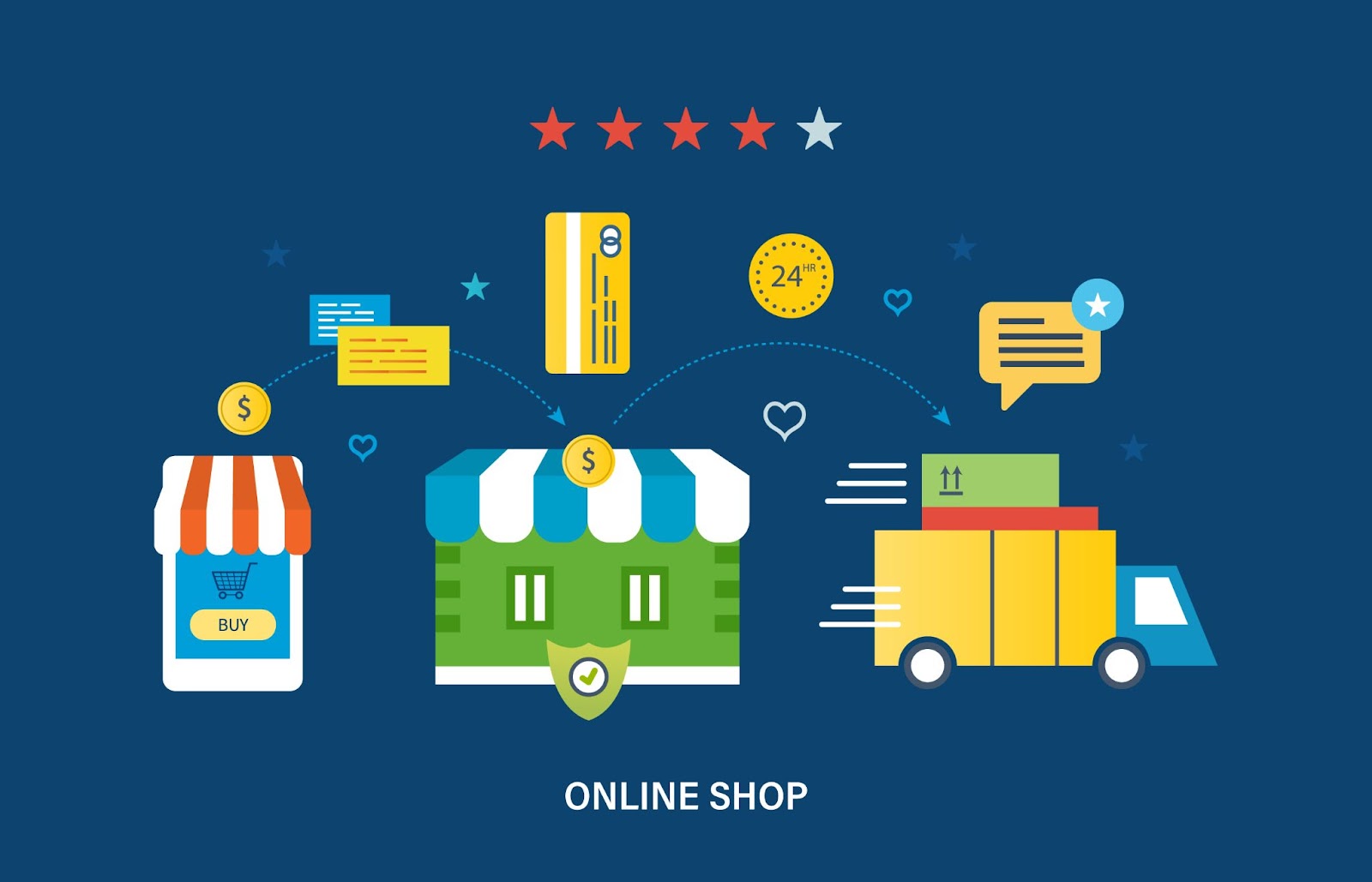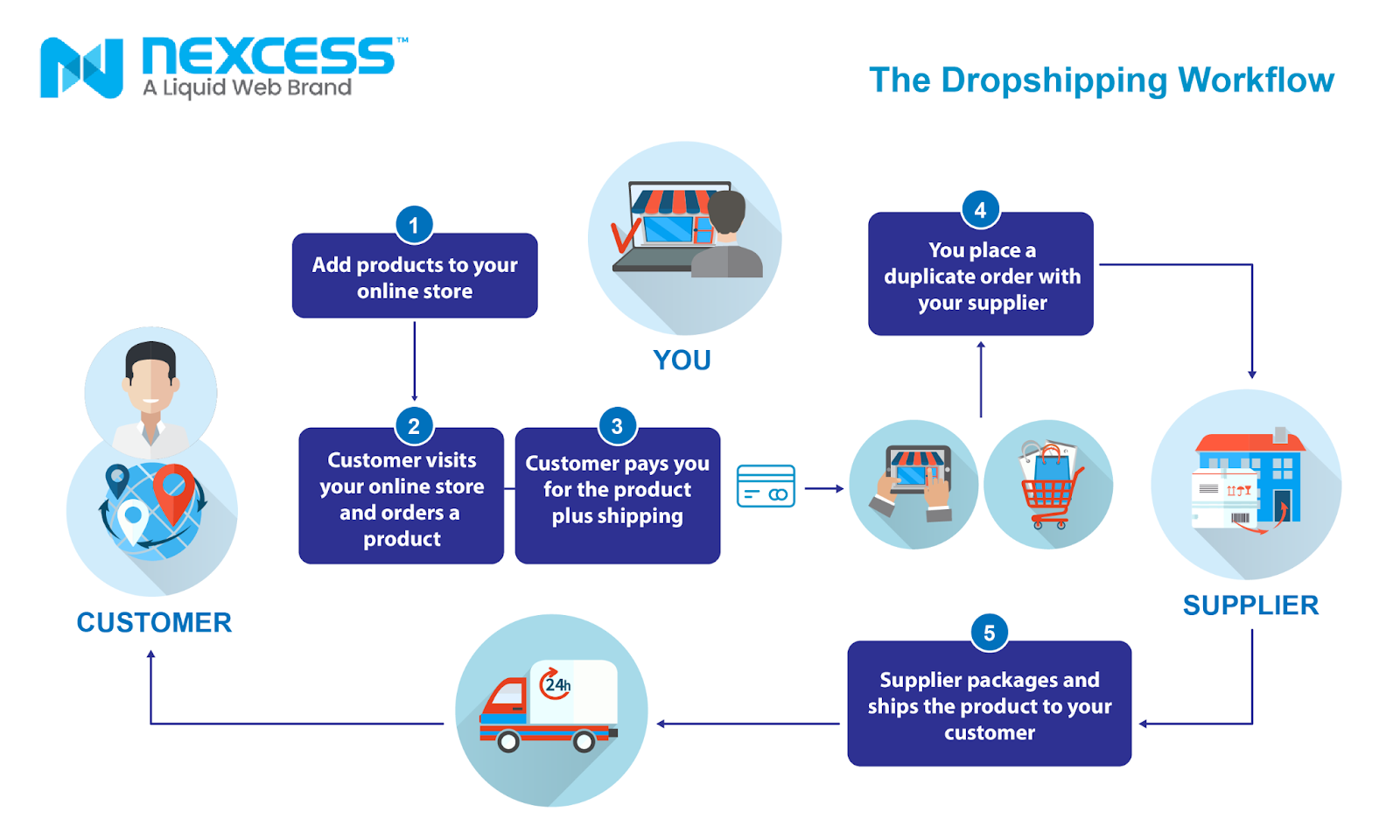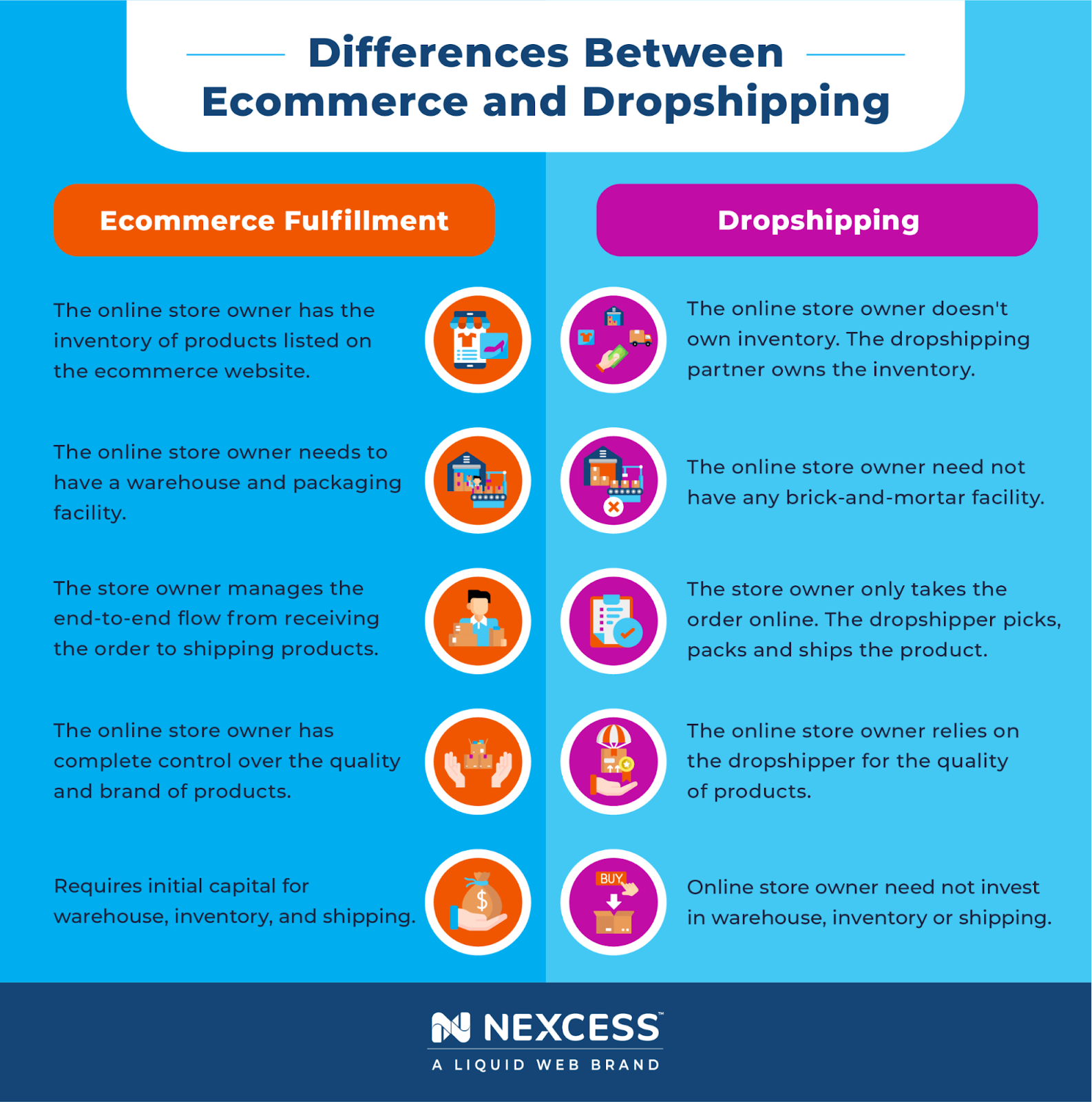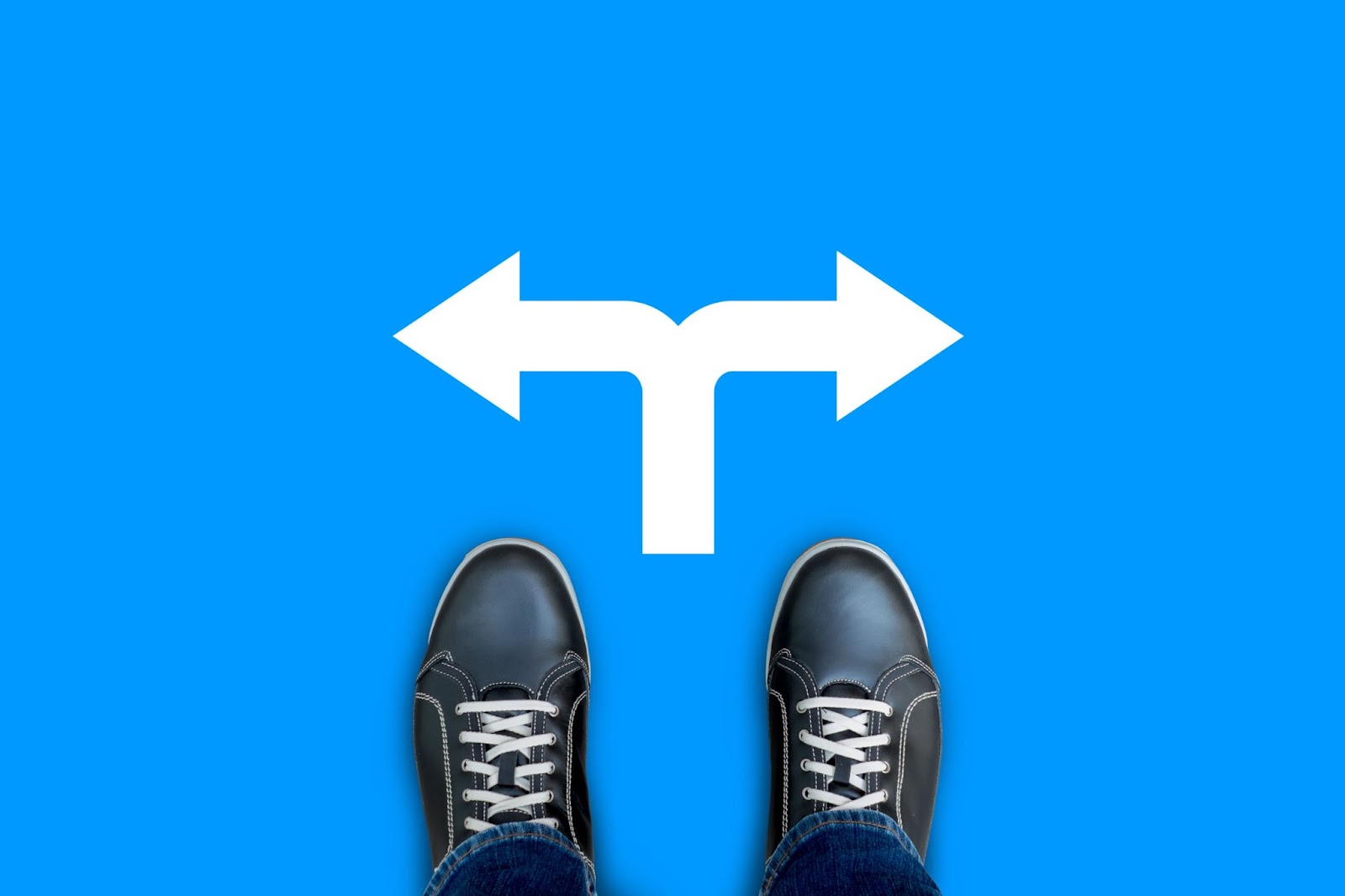Dropshipping vs. Ecommerce: A Beginner’s Guide
Are you planning to start an online store?
You might be evaluating different order fulfillment methods as the success of your online business depends a lot on how efficiently you deliver products.
The online business ecosystem offers several methods for order fulfillment. Ecommerce fulfillment and dropshipping are two major models.
Statista reports dropshipping had a $128.6 billion market value in 2020. It’s expected to grow a whopping 370% by 2026.
In this guide, let’s compare dropshipping vs. ecommerce and see which one suits your business best.
Here’s what we’ll cover:
Purchase to Delivery: The Ecommerce Workflow
Dropshipping vs. Ecommerce: Choosing the Best Option
Final Thoughts: Dropshipping vs. Ecommerce: A Basic Guide to Order fulfillment
Before getting into what dropshipping is and how it works, let’s understand the essential ecommerce workflow.
Purchase to Delivery: The Ecommerce Workflow
Let’s have a quick look at how an ecommerce store works.
Here’s the end-to-end workflow from purchase to delivery.
- A customer visits the online store and selects a product.
- The customer checks out the product by paying online.
- The product is picked up from a warehouse.
- The order is packed and labeled with the customer’s shipping address.
- A shipping company delivers the product to the customer.
The last three steps constitute the order fulfillment process. Businesses use ecommerce and dropshipping models for this.
Let’s see how dropshipping works and how it differs from ecommerce fulfillment.
How Does Dropshipping Work?
Source – Depositphotos, Standard License
Dropshipping is not an ecommerce alternative. It’s just another ecommerce business model.
Online stores that use dropshipping have no inventory of their own. Instead, they partner with an order fulfillment vendor, also known as a dropshipper.
Here are the basic steps for running a dropshipping store:
- You own the store and list products, but you don’t own inventory.
- A customer places an order and pays online.
- You put a duplicate order with your dropshipper.
- The dropshipper picks the product from their fulfillment center.
- The dropshipper packs the customer order and ships it to your customers.
Please note that dropshipping is different from 3rd party logistics (3PL). In 3PL, you own the inventory, but a third party does the warehousing. You only outsource the storage, packing, and shipping. But in dropshipping, the dropshipper owns the inventory.
In a nutshell, you can start a dropshipping store without even having a single product in your stock. You procure the product from your dropshipper only when a customer places an order.
The infographic below portrays the workflow of the dropshipping business model:
Now that you know how dropshipping works, let’s compare dropshipping vs. ecommerce to see which works best for you.
Similarities Between Ecommerce and Dropshipping
To start with, when we mention ecommerce, we mean the traditional ecommerce fulfillment process.
Ecommerce and dropshipping follow the same workflow till the order fulfillment step:
- The online retailer builds a website.
- They upload the product catalog.
- They design the checkout flow.
- They advertise and market their products.
There are a lot of commonalities between dropshipping and ecommerce.
How do they differ?
Difference Between Ecommerce and Dropshipping
In the traditional ecommerce fulfillment method, store owners source products and store them in a warehouse. In dropshipping, the business owner orders a product from the dropshipper after a customer places an order. The dropshipper sources, packs, and delivers the products to the customer.
The infographic below illustrates the primary differences between ecommerce fulfillment and dropshipping:
Dropshipping vs. Ecommerce: Choosing the Best Option
Source: Adobe Stock Photos, Standard License
Now that you know the key differences and similarities between ecommerce and dropshipping, let’s see how you can choose a method that suits you.
Dropshipping and Ecommerce: Key Business Impact
Ecommerce and dropshipping are different business models. They both impact the success of your ecommerce site in different ways.
To choose the best method, you need to compare the impact of these models on the following key business aspects.
Initial Investment
Dropshipping: You can start without initial investment as you work without inventory or warehouse.
Ecommerce: You need to procure products and set up a warehouse. It needs initial capital.
Profitability
Dropshipping: Your profit margins will be low as you buy products from a dropshipping supplier — a middleman. Your supply chain may also cost you more as you might need to pay for fulfillment services.
Ecommerce: Your profit margins will be high as you buy products at a wholesale price. You can also minimize the packaging and shipping costs.
Ease of Business
Dropshipping: As a beginner, dropshipping makes it easy to do business. You can avoid upfront product costs, storage, and packaging.
Ecommerce: As you need to procure, store and package products, this method is complex. You may need an experienced workforce.
Branding
Dropshipping: You have minimal control over the quality of products the dropshipper acquires for you. You won’t be able to sell custom products or use unique branding.
Ecommerce: You have complete control over the product you sell. You can sell your own products and brand them as you wish. It helps to create a powerful brand.
Risk
Dropshipping: If you don’t get quick sales, you have no risk as you don’t hold any inventory. But you’ll have some legal risk if the dropshipper doesn’t comply with regulations.
Ecommerce: You’ll face higher losses if products don’t sell. But you control the complete sales process, so you won’t have to deal with legal issues with a third party.
Based on these critical aspects, let’s look at a few tips on when to use dropshipping and ecommerce.
When To Choose Dropshipping Model
Here are a few scenarios when you should choose dropshipping.
- You are a beginner and want to open your store quickly.
- You want to minimize the startup costs.
- You sell products for which branding isn’t necessary.
- You want to minimize risks related to unsold inventory.
When To Choose Ecommerce Fulfilment Model
Here are a few scenarios when you should choose ecommerce fulfillment.
- You have enough funds and a capable workforce.
- You are selling your own branded products.
- You want to have complete control over your order fulfillment.
Final Thoughts: Dropshipping vs. Ecommerce: A Basic Guide To Order Fulfillment
Dropshipping and ecommerce are two useful order fulfillment methods. Both have their pros and cons.
While choosing dropshipping vs. ecommerce, you need to carefully consider the impact of these models on business aspects like:
- Initial Investment.
- Profitability.
- Ease of Business.
- Branding.
- Flexibility.
No matter which fulfillment model you choose, you need to create an excellent store to create a vast customer base.
Are you ready to take that first step in building an online store? You can do it in a few clicks using Hostdedi’s StoreBuilder.
Check out our StoreBuilder plans to get started today.








